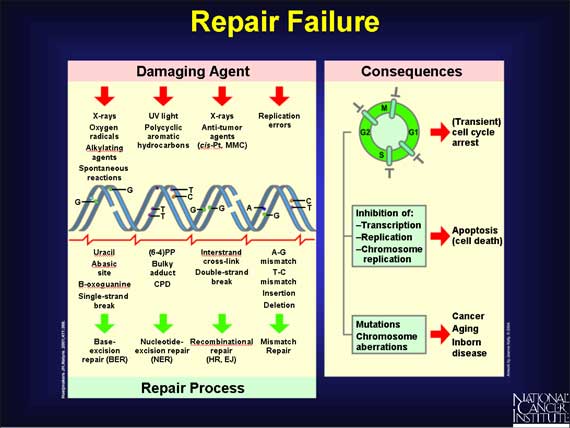|
Some mutations linked to cancer appear to involve a failure of one or many of the cell's repair systems. One example of such error involves DNA mismatch repair. After DNA copies itself, proteins from mismatch repair genes act as proofreaders to identify and correct mismatches. If a loss or mutation occurs in the mismatch repair genes, sporadic mutations will more likely accumulate. Other errors in repair may involve incorrect cutting out of bases--or whole nucleotides--as repair proteins try to fix DNA after bulky molecules, such as the carcinogens in cigarettes, have attached. This is faulty excision repair. Sometimes both strands of DNA suffer breaks at the same time, and faulty recombinational repair occurs. Any of these mistakes may enable mutations to persist, get copied, and eventually contribute to cancer's development.

< Previous | Index | Next Slide > |